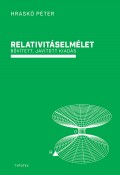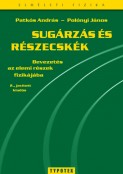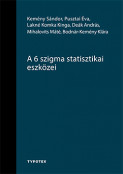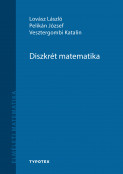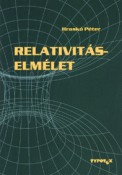
Oldalszám: 436 oldal
Formátum: B/5
ISBN: 978-963-9326-30-9
Témakör: in Hungarian and English
Sorozat: Elméleti fizika
Elfogyott
Relativity Theory is an introduction into the concepts and mathematical methods of Einstein's theory. The first two parts are devoted to the special theory, while in Part 3 fundamentals of the general theory are summarized in simple terms. The mathematics relevant to this theory is explained in detail in Part 4 no prior knowledge of the Riemannian geometry by the reader is, therefore, required. Part 5 contains those aspects of the theory which follow from the equivalance principle alone, Einstein-equations being introduced only in Part 6. Central symmetrical space-time and gravitational waves are treated in Parts 7 and 8 respectively. Part of the text is presented in the form of problems (there is about a hundred of them) each of which is accompanied with a detailed solution. The notes at the end of the book contain mainly historical material.
CONTENT
Foreword
Part 1. Special relativity (space-time geometry)
Reference frames.
Galilei-transformation.
The velocity of light and the relativity of simultaneity.
The general form of the transformation between systems of inerta.
The Lorentz-transformation and the relativistic addition of velocity.
Postulates of the relativity theory.
The notion of space-time.
Space-time geometry.
The notion of the proper time.
The causality paradox.
Lorentz-contraction.
Tensors.
Part 2. Special relativity (dynamics)
Velocity and acceleration.
Density and current-density.
Maxwell equations.
Geometrical optics
Motion of a point mass in a field of force
The momentum and energy of a point mass
Zero mass particles
The energy-momentum tensor
Spinors
Part 3. The gravity as geometry
Difficulties of the Newtonian theory of gravitation
The inertial and gravitational masses
The geodetic hypothesis
Locality of the inertial frames
Part 4. Riemannian geometry
Two-dimensional surfaces
The Riemannian manifold
The pseudoriemannian- manifold
Parallel transport
Covariant and absolute derivatives
Finite parallel transport
Geodetic equation
The concept of the curvature-tensor
Properties of the Riemann-tensor
Densities
Integration
Part 5. The pseudorimannian space-time and the principle of equivalence
Local frames of inertia
Nonrotating local accelerating frames (Fermi coordinates)
The metrics around the Sun based on the geodetic hypothesis
Electrodynamic in the pseudorimannian space-time
The gravitational red shift
Tetrads
Spinors in pseudoriemannian space-time
Part 6. The Einstein equation
The Einstein equation
The Hilbert action
Gravitational energy
Coordinates in the general relativity
Part 7. Space-time around solitary stars
Central symmetric static space-time
The Schwarzschild-solution
Bending of light
Precession of the perihelion
Geodetic precession
The nature of the Schwarzschild.singularity
Kruskal-Szekeres space-time
The space-time of rotating stars.
Part 8. Gravitational radiation
Gravitational plane waves
Quadruple radiation
Principles of the detection of the gravitational radiation
Notes

